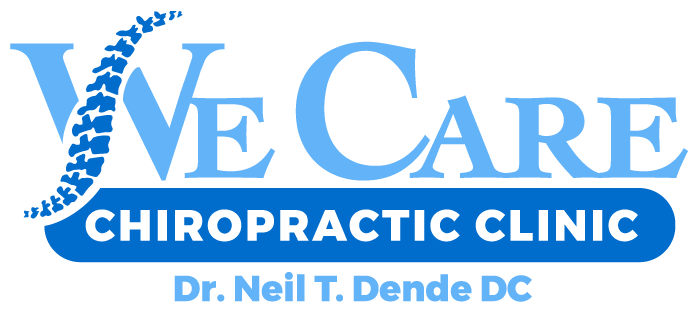What Is Degenerative Disc Disease?
CHIROPRACTIC CARE
24/7 Emergency Auto Injury Appointments
Chiropractic Care | We Care Chiropractic in Glendale Arizona
When typical changes in your spine’s disks create pain, it’s called degenerative disk disease.
Spinal disks act as shock absorbers between your spine’s vertebrae, or bones. They aid with the flexibility of your back, allowing you to bend and twist. They may show indications of wear and tear as you get older. They start to break down and may not work as well as they once did.
Although nearly everyone’s disks degrade over time, not everyone experiences pain. You have degenerative disk disease if your back pain is caused by worn-out spinal disks.
What is the root of the problem?
A soft inner core and a robust outside wall make up your spinal disks. Degenerative disk disease is caused by changes in the disks, such as:
- Allow to air dry. The disks in your spine are primarily made of water when you’re born. They lose water and become thinner as you age. Shocks are not as well absorbed by flatter disks. As a result of the loss of fluids, there is less cushion or padding between your vertebrae. Other abnormalities in your spine may develop as a result, causing pain.
- Over time, the stress of everyday movements and slight traumas can produce small tears in the outer wall, which houses the nerves. Any tears that are close to the nerves might be unpleasant. The disk’s soft core may also push through the cracks if the wall breaks down. A slipped or herniated disk occurs when the disk bulges or slips out of place. It has the potential to harm adjacent nerves.
What Are the Signs and Symptoms?
Your back and neck will most likely be in excruciating or continual discomfort. The location of the weak disk and any other alterations it has created will determine your particular symptoms.
The following are some of the most common symptoms:
- Are you experiencing pain in your lower back, buttocks, or upper thighs?
- It appears and then vanishes. It might be mild or severe, and it can persist anywhere from a few days to months.
- When you sit, it hurts more, and when you move and walk, it feels better.
- When you bend, raise, or twist, it hurts worse.
- When you shift positions or lie down, it gets better.
- Degenerative disk disease can cause numbness and tingling in the arms and legs in some people. Your leg muscles may also become weak as a result of this. This suggests that the nerves around your spine may be impacted by the damaged disks.
- What Is the Process of Diagnosis?
Your doctor will inquire about your medical history as well as your current symptoms. They might inquire:
- When did the discomfort begin? Which portion of your spine is bothering you?
- If it has spread to other parts of your body, seek medical help immediately.
- If you’ve experienced previous back issues,
- If you have a family history of such issues, consult your doctor.
- They’ll examine your spine for indicators of the disease, such as lower back or neck pain. They may also ask you to walk or bend in order to determine which movements create discomfort.
- To check for bone or nerve damage near your spine, your doctor may conduct an X-ray or an MRI.
What Is the Treatment for It?
The goal is to alleviate discomfort while also preventing further injury. Based on your symptoms and the severity of your problem, your doctor will recommend the best treatment option for you. The following treatments may be used:
- Inflammation can be reduced using over-the-counter pain medications such as aspirin and ibuprofen. They can help you feel better and reduce edema. If you need it, your doctor may prescribe a stronger pain reliever.
- Muscle spasms are another symptom of degenerative disk disease. Your doctor may prescribe medication to help you feel better.
- Physical therapy is a type of treatment that involves the use of The muscles in your neck and back get stronger and more flexible as a result of specific movements. This helps to stabilize the spine. Physical therapy and pain medicines are usually sufficient for long-term treatment.
- Shots of steroid. These contain severe pain, swelling, and inflammation-relieving medicines. Your doctor may recommend that you have a shot in your back’s epidural space, a fluid-filled area surrounding the spinal cord, or in a nerve or muscle.
Surgery
If other treatments are unsuccessful, your doctor may suggest surgery. A discectomy is a technique that removes the damaged section of the disk. This relieves the strain on your nerves. In some situations, your doctor may decide to remove the entire disk and replace it with an artificial one. After removing the disk, your doctor may fuse (permanently link) the bones in your spine if you have a significant condition.
Located in Glendale, AZ, We Care Chiropractic has been providing the valley with the best chiropractic services for years. We Care Chiropractic emphasizes its focus on improving overall health, which can prevent further illness and pain. Let We Care Chiropractic help your body function at an all-time high. Chiropractors are a great alternative to traditional medicine, and much less costly than any surgical repairs. Feel free to contact the team at We Care Chiropractic today!
AT WE CARE CHIROPRACTIC, WE GOT YOUR BACK!

